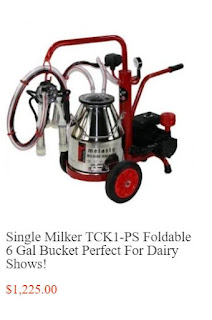The Art and Science of Goat Milking
Introduction to Goat Milking
Goat milking is both an ancient tradition and a modern agricultural practice that has evolved significantly over the centuries. This process, often seen in rural communities and increasingly popular in sustainable farming practices, requires a blend of skill, knowledge, and technology. Understanding the nuances of goat milking can help both novice and experienced farmers achieve optimal milk production and maintain the health of their goats.
The Basics of Goat Milking
Milking goats is not just about extracting milk; it's about ensuring the well-being of the animals while maximizing milk yield. The process begins with selecting the right breed of goat. Dairy goats such as Nubians, Saanens, and Alpines are particularly renowned for their high milk production and quality. Proper breed selection can set the foundation for successful milking practices.
Before milking, it’s essential to prepare both the goat and the milking environment. Goats should be clean, well-fed, and comfortable. The milking area should be hygienic to prevent contamination of the milk. Equipment used, whether manual or automated, must be sterilized regularly to maintain milk quality.
Milking Techniques and Best Practices
Effective milking techniques play a crucial role in both the quantity and quality of milk produced. Hand milking, though labor-intensive, allows for personal attention to each goat and can be particularly useful in small-scale operations. The process involves gently squeezing and pulling the teat to expel the milk, ensuring a steady and consistent rhythm. On the other hand, machine milking, using a vacuum system, is more efficient for larger herds and helps reduce labor.
Regardless of the method used, it is vital to handle the goats gently and avoid causing them stress, as this can negatively impact milk production. The milking routine should be consistent, and each goat should be milked at regular intervals to stimulate milk flow and avoid udder problems.
Maintaining Goat Health
Healthy goats are productive goats. Regular veterinary check-ups, proper nutrition, and a clean living environment are essential components of goat health management. Monitoring the udder for signs of mastitis or other infections is crucial, as such conditions can significantly affect milk yield and quality.
Additionally, proper milking hygiene practices are necessary to prevent contamination and ensure that the milk remains safe for consumption. This includes using clean equipment, maintaining a clean milking area, and following guidelines for milk storage and handling.
Conclusion
Goat milker is a multifaceted practice that combines tradition with modern technology. Whether you're a small-scale farmer or managing a larger dairy operation, understanding the intricacies of goat milking, from breed selection to maintaining goat health, is essential for success. By implementing best practices and maintaining a focus on animal welfare, you can ensure a high-quality milk production that benefits both the goats and the consumers.




Comments
Post a Comment